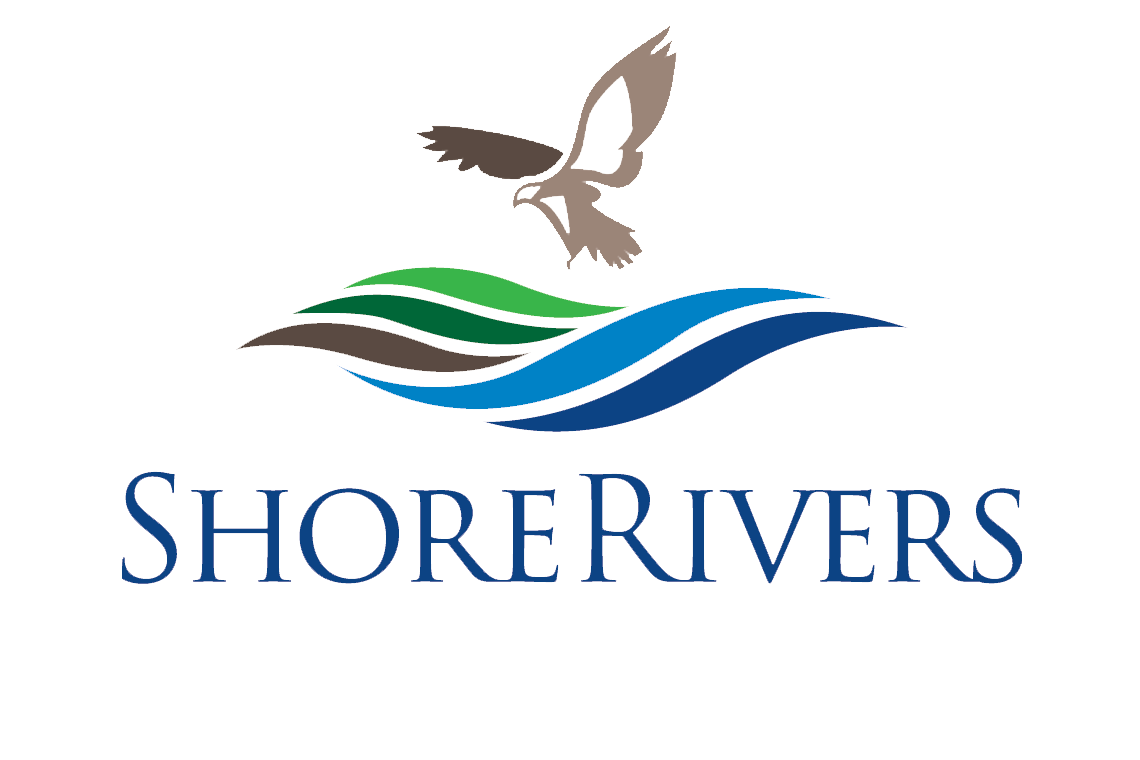Thanks to funding from the Watershed Assistance Grant Program, ShoreRivers is working with a local contractor to design a living shoreline to restore this eroding shoreline that acts as a barrier protecting marinas, a public boat launch, docks, homes, and other infrastructure located along Little Creek Road in Chester, MD. This is one of four design projects ShoreRivers has secured funding for that will protect waterways on Maryland’s Eastern Shore.
ShoreRivers is proud to be in the midst of four separate projects to develop and design conservation and best management practices that will, in turn, protect local waterways.
The restorative design of a headwater stream on the mainstem of the Sassafras River is the focus of one project as part of a holistic, nature-based conservation approach for the property. ShoreRivers has contracted Ecotone for the design, which will concentrate on reconnecting the historic floodplain and developing a dynamic stream/wetland complex that will provide stormwater storage, nutrient processing, habitat uplift, downstream flood mitigation and resiliency, and carbon sequestration.
Another project is a continuation of work completed in 2020 that restored wetlands on a large grain farm on the headwaters of Black Duck Creek and the Little Bohemia. Phase II of the project will work downstream of those initial practices, restoring the historic coastal plain by reconnecting floodplain wetlands, groundwater, and the stream channel. Sustainable Science has been contracted for the Phase II work, focusing on three drainages, each with a slightly different approach, that will restore 3,100 linear feet of stream and 5–7 acres of floodplain wetland.
Thanks to funding from the Watershed Assistance Grant Program, ShoreRivers is working with a local contractor to design a living shoreline to restore this eroding shoreline that acts as a barrier protecting marinas, a public boat launch, docks, homes, and other infrastructure located along Little Creek Road in Chester, MD. This is one of four design projects ShoreRivers has secured funding for that will protect waterways on Maryland’s Eastern Shore.
A third project—on a peninsular shoreline separating Little Creek from Crab Alley Bay in Chester, MD—seeks to address increasing erosion. Underwood & Associates is contracted to design a living shoreline to restore this quickly eroding 500 feet of shoreline, which serves as a natural barrier protecting marinas, a public boat launch, docks, homes, and other infrastructure located along Little Creek Road. The living shoreline will mitigate wave energy, reduce erosion, and support sand accretion and, once implemented, will result in 838 feet of resilient living shoreline and 40,825 square feet of tidal marsh habitat.
Each of these projects is generously funded through the Watershed Assistance Grant Program, a partnership between the Chesapeake Bay Trust, the Maryland Department of Natural Resources, the Maryland Department of the Environment, and West Virginia’s Department of Environmental Protection. This program provides support for watershed restoration project designs and permitting and for watershed planning and programmatic development.
With funding through the Chesapeake Bay Trust’s Green Streets, Green Jobs, Green Towns (G3) Grant Program, the fourth project will address flooding concerns in Rock Hall, MD. To complement and support the Town of Rock Hall’s own adoption of green infrastructure and stormwater practices, ShoreRivers will be developing concept-level plans for the Rock Hall Civic Center and the Rock Hall Ball Park, and investigate and prepare design solutions for a stormwater issue at Rock Hall Elementary School. These three plans will identify stormwater projects and green infrastructure opportunities that, when implemented, will better control stormwater, enhance community enjoyment, increase habitat and biodiversity, and reduce runoff and pollutants in stormwater entering the Chester River and Chesapeake Bay.
ShoreRivers is a leader in designing, funding, and managing major restoration projects to reduce the sediments and nutrients that pollute our waterways. We work with our community to install projects on county-owned properties, private lands, school campuses, town properties, and church lands. Visit shorerivers.org to learn more.


